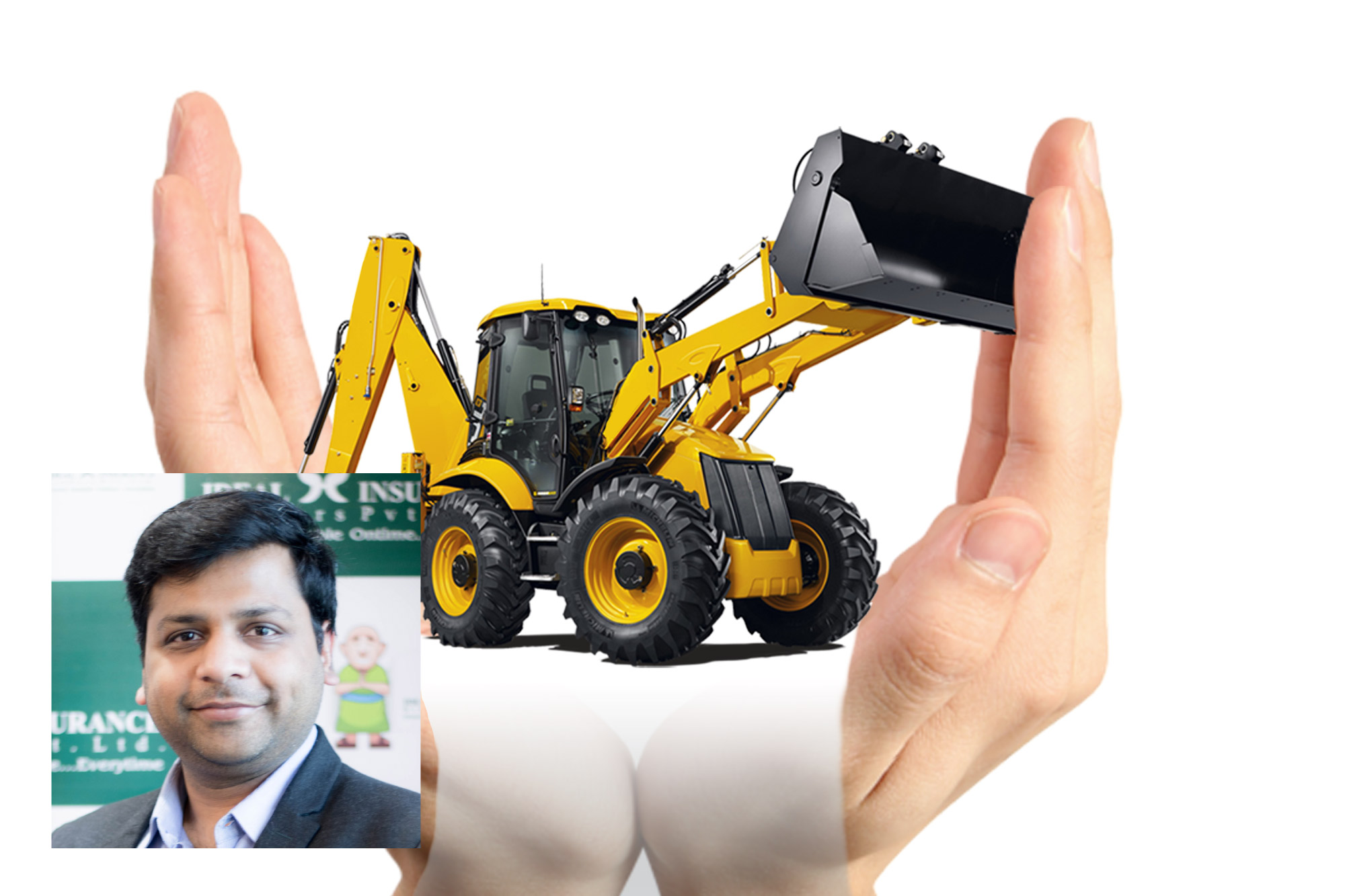Understanding insurance for your earthmovers
By Edit Team | November 1, 2017 12:20 pm SHARE

Most of the cities across the nation are experiencing a boom in real estate and Infrastructure development. From residential to public transit to public works, developers or contractors are bidding on and undertaking large projects. The government has announced major investment into roads through PMGSY, NHAI, etc. The cost of such construction is huge and involves high value equipments such as excavator, mobile crane, tractor, bulldozer, graders, drilling machines, rock breakers, etc. Loss of even a part of it or to replace it unexpectedly due to any kind of an accident or fire can be a big pinch in the pocket of a builder or contractor. Unfortunately, theft or burglaries of any part of the machines are much in occurrence.
These days as these stolen products have a ready market. Selling these can earn a handful of money at one go causing the thieves to get brazen with every passing day!
Besides damage to the machines, the heavy equipment may also cause accident and hurt the people working around by any of its parts. Due to this the company may be sued or will have to pay compensation to the injured person. And all this require a lot of capital.
There are multiple ways to counter such unexpected risks. But the most simple and cost effective risk management tool is Insurance. It is imperative for every builder to conduct an Insurance audit for its complete machinery to understand the different types of risks involved and which risks can be transferred to an Insurance company. This will make their businesses more robust and more prepared to manage uncertainties. So to stay protected and minimise the loss to the business it is imperative to stay insured. Insurance helps you to account for the unforeseen damage to your machinery.
The insurance cover available for Earthmoving construction equipment users is the generic one for all contractors – the Contractor’s Plant and Machinery (CPM) Policy. It protects the interest of civil contractors against the damage to or destruction of various civil engineering projects.
The product features are captured below:
Scope
• All risk policy covering unforeseen physical damage to machinery.
• At work, at rest, while dismantled and re-erected, shifting within the project site.
Coverage
• All risk policy guided by named exclusions as per CPM tariff.
• External accidents, collision, overturning, fire, theft, burglary.
Exclusions
• Specified excess, breakdown, loss to replaceable parts, vehicles licensed for road use, total/partial immersion in tidal water, transit loss.
• Public liability while used on public roads, wear and tear, consequential loss, nuclear and war perils, existing defects, wilful negligence, loss or damage during routine servicing.
Additional covers
• Third party liability: Maximum 10 per cent of the total SI, owners surrounding property, debris removal.
• Additional custom duty, express freight, air freight, earthquake, terrorism, dismantling cover, escalation.
Type of covers
• Single location policy
• Floater on all India basis.
Machinery classification
• Machineries classified under four Groups (I, II, III, IV) in ascending order of pricing.
• Most ECE fall under Groups III and IV.
Declined risks
• Waterborne machineries, oil gas drilling, rigs, policies on first loss basis.
• Tunnelling boring machines, all types of underground and mining risks.
Special features
• Although the product is presented as an all risk policy, the named exclusions and the declined risks render the ‘All Risk’ description inappropriate.
• The basis of valuation for fixing the sum insured is the replacement value of the machinery when new. But the loss settlement happens for total loss claims on ‘old for old’ basis with depreciation applied. For partial loss claims, payment is allowed on ‘new for old’ reinstatement basis.
• The standard product talks about floater facility on an all India basis. But insurers are insisting on locations to be named and specified.
• ECE can be covered under an annual policy or as part of the EAR/CAR policy for the duration of the project policy period. However, the SI capping of Rs 25 lakhs for CPM under project policies is deemed to be very low. Also, there is duality in rating of CPM used in a project: Some rate them as per the project policy rates, some rate them as per the applicable CPM rates.
• Covers like unintentional non-deliberate overload, substitute (hired) machinery costs, wet/dry hire extension, finance protection/ lease liability extension, waiver of underground risk limitations/exclusions internationally available to ECE users are not sold in the Indian market.
In addition, as a business owner one has a responsibility towards its workers. Hence a workman’s compensation insurance is important for businesses.
The Workmen’s Compensation Insurance Policy provides for legal liability coverage for compensation to your employees for bodily injury or death caused due to accidents or occupational diseases arising out of and in course of employment.
The workmen’s compensation insurance is the primary method by which an employer can demonstrate the ability to satisfy the obligations imposed by the worker’s compensation statutes. It is compensation payable under a scheme set out in the Workmen’s Compensation Act of India, monitored by the Ministry of Labour.
This product is addressed to:
All manufacturing units with employees who fall under the purview of the Workmen’s Compensation Insurance Act, 1923 have Employers’ Liability exposures under the Act. All business organisations have employers’ liability exposures under common law and such organisations form the target market for this class of business.
Authored by:
Amit Agarwal, Director,
Ideal Insurance Brokers Pvt Ltd.
Email: amit@idealinsurance.in
Mobile: +91-9830946349
Cookie Consent
We use cookies to personalize your experience. By continuing to visit this website you agree to our Terms & Conditions, Privacy Policy and Cookie Policy.





















